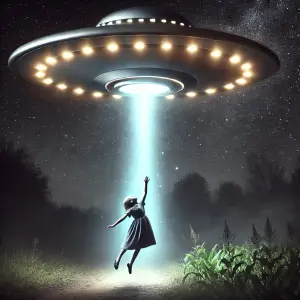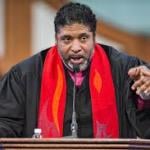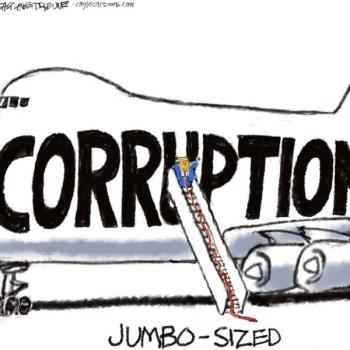Are UAP from future time? UFO 19

Are UAP from outer space? Or are UAP from future time? Why do I ask such questions? Because recently numerous alternatives to the extraterrestrial hypothesis (ETH) to explain UAP have been lifted up. Are aliens visitors from somewhere else in space? Or are UAP from future time?
First, a little background.
From Scientizing Ufology to Ultimate Reality
In a previous post, Scientizing Ufology, I celebrated the new era where establishment scientists and ufologists attend the same BBQs and work together on UAP studies. Yet, this convergence stops short of exhausting the UFO phenomenon. What remains to be investigated – a dimension of the UFO phenomenon which lies outside the scope of scientific naturalism – are claims of the paranormal and abduction narratives. These require extra-scientific resources for investigation. And they virtually scream out: give me an ontology!

The ever-insightful Jensine Andresen cautions against relying exclusively on the datacentric mindset of the scientist investigating UAP. “A datacentric methodology is not scientific in a deep sense that involves theory—quite the opposite, in fact, since a datacentric methodology tries to reduce reality to mere measurement” (Andresen, Hyperconvergenece, 2023, 29). Nevertheless, Andresen also argues “against dependence on paranormal concepts and explanations for UAP” because the constructed category or the parnormal “is overly inclusive to the point of meaninglessness…A major downside risk of paranormal explanations of ETI/UAP is that they permit all sorts of projection onto the phenomena—most often negative projection that attempts to paint ETI/UAP as malevolent or even demonic” (Andresen, Hyperconvergenece, 2023, 11). With Andresen’s caution in mind, we still need to press forward on questions evoked by our religious sensibilities.
More than merely producing a scientific explanation for UAP is at stake here. Endogenous to the UFO experience, at least for many experiencers, is an encounter with the numinous (the holy). Some experiencers receive a revelation of reality that is more real than our everyday reality. It’s the experience of being overwhelmed by the mysterium tremendum.
Should we ask the laboratory scientist to explain how our religious sensibilities are activated by UAP? No, according to ufologist Brenda Denzler. There is “almost no room in the organized [scientific] study of aerial anomalies for religion…” (Denzler 2001, Kindle 1587-1589). We must turn to someone who understands religion. Perhaps to the public theologian.
The Religious Dimension of UAP

In my previous research on the phenomenon, I have sought to point out the inherent religious dimension to UFOs at the cultural level. I have stressed how in the modern age where traditional religious symbols seem to have died, our archaic religious sensibilities have been tantalized by belief in terrestrial and especially extraterrestrial technology. Flying saucers replace angels. What comes from the heavens riding on the clouds with power and glory is an extraterrestrial science and technology which will deliver salvation in the form of medical advance, healing our planet’s biosphere, and world peace. That’s the religious dimension at the level of culture to which I’ve devoted considerable treatment in the past.
The religious dimension I turn to now may be different. I would like to ask the question: what might be the ontological or metaphysical implications of the enigmatic reality that shocks UFO experiencers?[1]
On our list of explanations is the ETH (extraterrestrial hypothesis), of course. But it’s by no means the only hypothesis. Suppose aliens come to us from a different time rather than a different space?
Are UAP from future time?
Now to our question: are UAP from future time? This is a reasonable question, at least according to the prodigious Jacques Vallée. “The genuine UFO phenomenon…is associated with a form of nonhuman consciousness that manipulates space and time in ways we do not understand” (Vallée 2008, eBook 3537). Puzzlement over time and space arises inherently from UAP.
How do you like the word, “extratempestrial”? It’s the term chosen by Michael P. Masters, a professor of biological anthropology at Montana Technological University. The extratempestral model is the “notion that UFOs and aliens may be our distant human descendants,” our future descendants returning to us in time (Masters 2022, 5).
As I’ve pointed out frequently when describing the ETI Myth, many in our culture graft belief in technological progress onto the tree of biological evolution. This, then, blossoms into belief that more time to evolve means more time to advance. Here on earth, our eidetic imaginations picture our posthuman descendants as superintelligent. Our progeny will become so advanced in technology that their gadgets would look to us like magic. According to Masters, our time-traveling descendants come back to visit us, and their visitations appear to include technological magic.
Time Travel within Dual-Aspect Monism
“I have been much informed here by the work of the physical anthropologist Michael P. Masters in The Extratempestrial Model,” says Jeffrey Kripal, a religious studies professor at Rice University (Kripal 2024, 286). Kripal expands the extratempestrial model into an entire cosmology not unfamiliar to new agers at Esalen or Pondicherry.

What the abductee taken aboard a hovering craft reports is so bizarre that we must think of it as imaginal, as impossible. Yet, Kripal takes the imaginal seriously. The imaginal morphs within “the ufological and abduction materials, where the imaginal displays both … evolutionary patterns suggestive of a future superhuman state and dialectical or apophatic sensibilities often explicitly indebted to the mystical traditions of the past” (Kripal 2024, 53).
The apophatic door opened by the abduction leads, according to Kripal, into “….dual-aspect monism” (Kripal 2024, 14). This is the universe described by ancient Gnosticism, Hindu Advaita, the Theosophical Society, and the American Transcendentalists.
“Philosophically, I am articulating a form of dual-aspect monism—that is, the position that reality is ontologically One but epistemologically Two. We are the splitters of reality. Reality itself is not so split….It is impossible thinking, which I have applied to some of the wildest exempla of the history of religions to show how and why it works so well. Put succinctly, dual-aspect monism is a philosophical proposition that states that the mental (psychological) and the material (physical) are aspects of one underlying reality which itself is psychophysically neutral (that is, neither mental nor material)” (Kripal 2024, 162).
As you can see, Kripal has slightly modified ancient gnostic ontology. For our ancient gnostic forebearers and Brahman philosophers, only the transcendent unity is real and our experience of the self-world duality is illusory. For Kripal, both the unity and the duality are real. Being and knowing are both real for Kripal.
Now, to the matter of time travel. The eternity imagined in Kripal’s suprasensible unity contains all events: past, present, and future. This permits our smart descendants on earth to tap into this eternity – known in Einsteinian physics as the “block universe” – and then travel from one time to another.[2] Those whom we meet aboard the hovering flying saucer are not aliens from space. Rather, they’re our own grandchildren back for a visit.
What we see in Masters and Kripal is a pair of metaphysical hypotheses to explain the yet unexplained numinous reality reported in abductee narratives.
Envoi
The heavy question that plagues ufology today right along with theology yesterday is how to bridge our inherited split between subject and object. Modern science deals solely with objects. And does so objectively. Scientific methods are fenced off so that they cannot integrate subjectivity. Yet, the UFO experience includes both subjective and objective components.
Reintegrating subjective and objective domains seems to be required if ufology is to be adquate to studying UAP. Kripal’s ontology attempts to reunite what has been separated by modernity. “There is no final distinction between subjective and objective states, between consciousness and cosmos” (Kripal 2024, 8). I would like to think Kripal’s right on this.
Nevertheless, I personally find believing in a gnostic retrieval of non-dual aspect monism more difficult than believing literally in UFO abductions. Yet, I thank Kripal along with Masters for providing tentative answers to the question we ask: what is the reality reported by abductees?
In upcoming posts, I would like to review other ontological options for explaining the numinous reality that shocks abductees and other experiencers.
SR 1189 UFO 19 Are UAP from future time?
SR 1186 UFO 16 UAP Cryptoterrestrial Hypothesis
SR 1187 UFO 17 Scientizing Ufology
SR 1188 UFO 18 Are UAP from Outer Space?
SR 1189 UFO 19 Are UAP from future time?
SR 1190 UFO 20 UAP: the Interdimensional Hypothesis
SR 1192 UFO 22 UAP, ETI, and David Bohm’s Physics
SR 1194 UFO 24. A UFO for Christmas?
SR 1195, UFO 25. UAP in the Nation of Islam?
▓

Ted Peters directs traffic at the intersection of science, religion, and ethics. Peters is an emeritus professor at the Graduate Theological Union, where he co-edits the journal, Theology and Science, with Robert John Russell on behalf of the Center for Theology and the Natural Sciences, in Berkeley, California, USA. He authored Playing God? Genetic Determinism and Human Freedom? (Routledge, 2nd ed., 2002) as well as Science, Theology, and Ethics (Ashgate 2003). Along with Martinez Hewlett, Joshua Moritz, and Robert John Russell, he co-edited, Astrotheology: Science and Theology Meet Extraterrestrial Intelligence (2018). Along with Octavio Chon Torres, Joseph Seckbach, and Russell Gordon, he co-edited, Astrobiology: Science, Ethics, and Public Policy (Scrivener 2021). Along with Arvin Gouw and Brian Patrick Green, he co-edited Religious Transhumanism and Its Critics (Lexington 2022). Look for his newest book, The Voice of Public Theology, a collection of previous articles. See his website: TedsTimelyTake.com.
Regarding UFOs, he is author of UFOs: God’s Chariots? Spirituality, Ancient Aliens, and Religious Yearnings in the Age of Extraterrestrials (Career Press New Page Books, 2014). He served as Louisiana State Director for MUON and is currently a member of two UFO investigation organizations, Society for UAP Studies and Scientific Coalition for UAP Studies.
▓
Notes
[1] According to the late John Mack, abductees cede ultimate importance to what they learned. “The alien abduction phenomenon appears to be a kind of outreach program from the cosmos for the spiritually impaired” (Mack 2021, 156).
[2] Jeffrey Kripal appeals to the block universe proposed by disciples of Einstein to support his notion of time travel. According to the block universe, all events from the past Big Bang to the future cosmic heat death belong to a single spacetime continuum and are immediately accessible. The block universe contains everything that has ever happened and will happen at any time and at any place. “I find such a block cosmology deeply satisfying for a very simple reason: because it does not deny, because it does not make impossible…individuals precognizing or dreaming a future that shows every sign of already existing” (Kripal 2024, 147).
References
Andresen, Jensine. 2023. Hyperconvergenece: Religion, Politics, and UFOs. Independent: https://www.goodreads.com/book/show/197292604-hyperconvergence.
Denzler, Brenda. 2001. Lure if the Edge: Scientific Passions, Religious Beliefs, and the Pursuit of UFOs . Berkeley CA: University of California Press.
Kripal, Jeffrey. 2024. , How to Think Impossibly: About Souls, UFOs, Time, Belief, and Everything Else . Chciago: University of Chicago Press.
Lomas, Tim, Brendan Case, and Michael Masters. 2024. “The cryptoterrestrial hypothesis: A case for scientific openness to a concealed earthly explanation for Unidentified Anomalous Phenomena.” Philosophy and Cosmology, June: 1-42; https://www.researchgate.net/publication/381405238_The_cryptoterrestrial_hypothesis_A_case_for_scientific_openness_to_a_concealed_earthly_explanation_for_Unidentified_Anomalous_Phenomena.
Mack, John. 2021. “Studying Intrusions from the Subtle Realm: How Can We Deepen Our Knowledge?” In Making Contact: Preparing for the New Ralities of Extraterrestrial Existence, by ed Alan Steinfeld, 136-157. New York: St. Martin’s.
Masters, Michael. 2022. The Extratempestrial Model. NY: Full Circle.
Peters, Ted. 2014. UFOs–God’s Chariots? Pompton Plains NJ: New Page Books.
Vallée, Jacques. 2008. Revelations: Alien Contact and Human Deception. Kindle. San Antonio TX: Anomalist Books.














